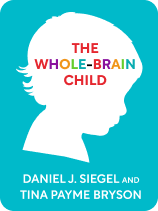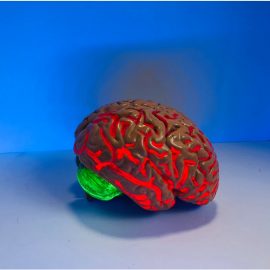

This article is an excerpt from the Shortform book guide to "The Whole-Brain Child" by Daniel J. Siegel and Tina Payne Bryson. Shortform has the world's best summaries and analyses of books you should be reading.
Like this article? Sign up for a free trial here .
How do you explain emotions to a child? What are some strategies to teach emotional intelligence to children?
Children with high emotional intelligence are better able to cope with difficult emotions because they understand that feelings are temporary. They are also more adept at recognizing the complexity of their own and other people’s emotions.
Here are two lessons for teaching emotional intelligence to children.
Teaching Emotional Intelligence to Children
By teaching emotional intelligence, children gain a wide range of skills that young children need help developing. At the most basic level, your child needs to understand that emotions are temporary, and that they don’t define who she is—feelings are states, not traits. It is also important to introduce the idea that feelings are complex and that it’s possible to feel many things at once.
Lesson 1: Feelings are Temporary
Explain to your child that emotions are like the weather: There’s no doubt that the clouds and the rain are real, but you also know that they won’t last forever. When your child is consumed by difficult emotions, it can be hard for her to imagine ever feeling better. If she can’t visualize it in the future, remind her of a recent time—maybe earlier that day—when she was happy or felt differently about the very thing that has upset her now.
Lesson 2: Emotions are Complex
Use everyday opportunities to illustrate how different feelings can coexist. If she’s upset that her friend cancelled a playdate for this weekend, acknowledge that she’s feeling disappointed, and help her to recognize that another part of her probably feels excited about their plans to reschedule the following weekend, and still another part of her is probably thinking about what she’s going to play during recess today.
Try using the acronym SIFT to help your child integrate different emotions:
1) Sensations include hunger and tiredness as well as the many ways that emotions affect the body. For example, your child can learn that butterflies in her stomach mean that she’s nervous.
2) Images include images from memories and from your child’s imagination and dreams, all of which can affect how she’s interpreting and reacting to the present. For example, if your child remembers the image of her being picked last for teams during recess, she’s inclined to feel left out among her peers.t.
3) Feelings and emotions can be symptomatic of an experience, but they can also influence your experience. For example, if you hit traffic on the way to your picnic and it puts you in a sour mood, you’re more likely to get annoyed at the noise from the children playing nearby.
4) Thoughts include the things you think about, your self-talk, and how you narrate your experiences. When your child becomes more aware of her thoughts, she doesn’t have to remain a victim of them—instead, she can direct them in a positive direction and reject negativity.

———End of Preview———
Like what you just read? Read the rest of the world's best book summary and analysis of Daniel J. Siegel and Tina Payne Bryson's "The Whole-Brain Child" at Shortform .
Here's what you'll find in our full The Whole-Brain Child summary :
- How to increase your child's self-awareness and emotional control
- Why the logical and emotional sides of the brain have to work together
- How to figure out why your child is afraid of something






